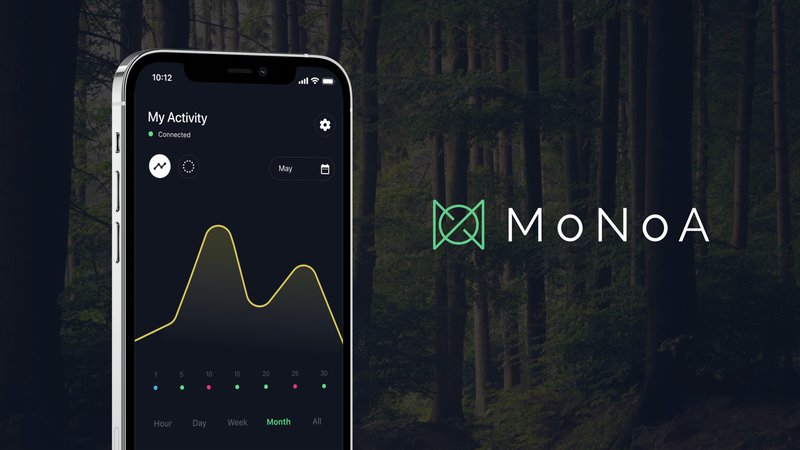Reading and understanding the MoNoA data is something you learn step by step, with certified coaches guiding you along the way. Before we dive into these 4 steps, we like to give you a glimpse into the life of a 48-year old man, who works 60 hours a week in a management position. This helps to clarify how the person feels, what the data tells him, and what activities help him in order to find balance again through the 4 steps.
You wake up around 6 AM and start your Thursday with an extensive breakfast while reading the paper. After your breakfast, you take a look at your schedule for today. It includes multiple performance meetings with individuals in your team, lunch with two managers from another team, and one important presentation for a client. You are always in control. Well, at least it feels that way.
Friday starts with a morning run at 6 AM. You’re training for a half marathon, 3 times a week. The day ends with drinks at the office, where you discuss an interesting chance with the CEO and promise him to get back with a plan on Monday. Meaning you will work Saturday and Sunday to deliver what you have promised. You wake up early to complete the plan and join already planned activities in the evening. This busy work cycle repeats itself every week. You eat and sleep well and take some rest in the evening before you go to bed. You might feel a little bit tired at times, but most of the time you feel fine. You look at the data from your MoNoA wearable, which startles and surprises. Is the data lying? This does not at all line up with your feelings of stress.

The MoNoA wearable and application give our protagonist feedback which tells him the opposite of how he feels. It is understandable this surprises him, but there is really no need to panic or a need to change behavior immediately. We will take you through the 4 steps to explain how to interpret the data and how to eventually change towards a healthier and more balanced lifestyle.
Step 1 – Accepting your situation
Accepting things the way they are without wanting to work towards solutions. Yes, this can be a tricky one. But it creates a perfect opportunity to become aware of how your body physically feels. This is important because the physical signals from your body are clearly present. Your mental mindset is able to ignore these physical signals, creating a distance between your body and mind. Your body is constantly telling you things. Take the time to understand what it wants to tell you. And please, don’t be too hard on yourself, as this will only slow down the process and make it even more difficult.
Step 2 – Planning moments to recover
After accepting the current situation and understanding what your body is trying to tell you, it is time to build moments of rest and recovery into your day. Try to schedule times to give your body some rest. The definition of rest varies from person to person and really comes down to doing and learning. The time and attention you give it will help you find out what works and what does not work for you. However, daily life or work can stand in the way. If you have a period full of deadlines, important meetings, and a lot of mental pressure, you should not expect to (fully) recover and restore to a balanced level. Accept it and try again when you can.
Step 3 – Learning what works for you
Periods of rest and recovery are the perfect occasion to investigate and discover what works and what does not work for you. The protagonist with the management function could do this by trying existing and new activities at different intensities (lighter or heavier, longer or shorter). The choice of activities is endless: reading a book, breathing exercises, a long walk in the woods, sitting in the sun, going out for a run, an appointment with a friend, listening to music, or getting a massage. Let’s not forget choosing healthy food with the right nutrition, as this provides you with the right amount of energy.

Step 4 – Understand and integrate
The last step is about integrating specific insights and activities into your daily and weekly schedule. These could be existing or new activities that help you to find back the balance and shorten the periods of recuperation. This helps you to regain balance faster in the future. An example for the protagonist could be doing breathing exercises on a daily basis, something he wasn’t quite comfortable with before. After trying this for a while, he feels and understands this helps him to recover by relaxation, thus increasing his overall body resilience.
We’re in it together
These 4 steps can be challenging at times. Detecting and interpreting your physical signals is very subjective, especially because you can only look at them from your own perspective. Our certified MoNoA coaches help guide you through the 4 steps with one-on-one conversations, advice based on your data, and personal exercises that work for you. Are you ready to own your health and unlock your full potential? Order your MoNoA here.
